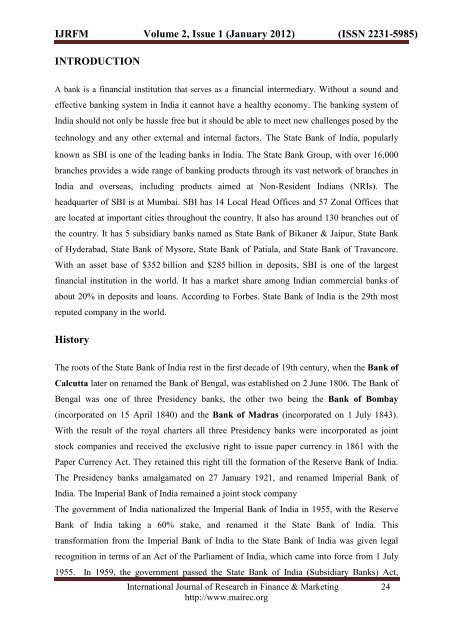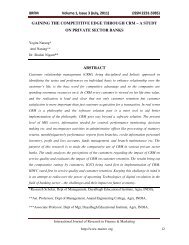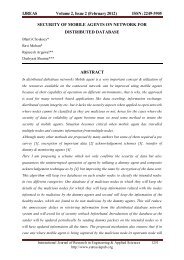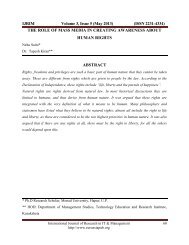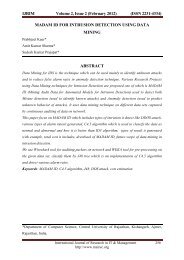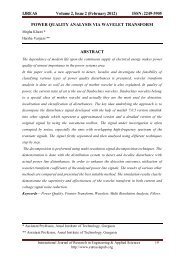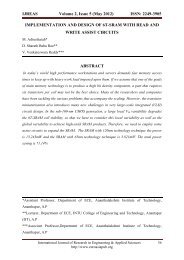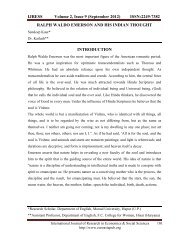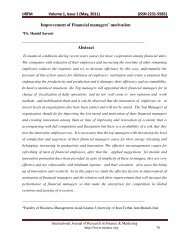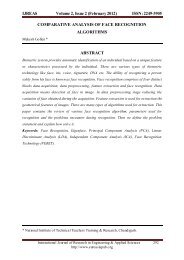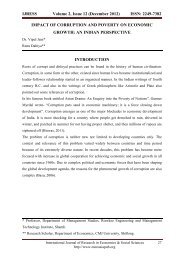TO STUDY THE FINANCIAL PERFORMANCE OF ... - Euroasiapub.org
TO STUDY THE FINANCIAL PERFORMANCE OF ... - Euroasiapub.org
TO STUDY THE FINANCIAL PERFORMANCE OF ... - Euroasiapub.org
You also want an ePaper? Increase the reach of your titles
YUMPU automatically turns print PDFs into web optimized ePapers that Google loves.
IJRFM Volume 2, Issue 1 (January 2012) (ISSN 2231-5985)<br />
INTRODUCTION<br />
A bank is a financial institution that serves as a financial intermediary. Without a sound and<br />
effective banking system in India it cannot have a healthy economy. The banking system of<br />
India should not only be hassle free but it should be able to meet new challenges posed by the<br />
technology and any other external and internal factors. The State Bank of India, popularly<br />
known as SBI is one of the leading banks in India. The State Bank Group, with over 16,000<br />
branches provides a wide range of banking products through its vast network of branches in<br />
India and overseas, including products aimed at Non-Resident Indians (NRIs). The<br />
headquarter of SBI is at Mumbai. SBI has 14 Local Head Offices and 57 Zonal Offices that<br />
are located at important cities throughout the country. It also has around 130 branches out of<br />
the country. It has 5 subsidiary banks named as State Bank of Bikaner & Jaipur, State Bank<br />
of Hyderabad, State Bank of Mysore, State Bank of Patiala, and State Bank of Travancore.<br />
With an asset base of $352 billion and $285 billion in deposits, SBI is one of the largest<br />
financial institution in the world. It has a market share among Indian commercial banks of<br />
about 20% in deposits and loans. According to Forbes. State Bank of India is the 29th most<br />
reputed company in the world.<br />
History<br />
The roots of the State Bank of India rest in the first decade of 19th century, when the Bank of<br />
Calcutta later on renamed the Bank of Bengal, was established on 2 June 1806. The Bank of<br />
Bengal was one of three Presidency banks, the other two being the Bank of Bombay<br />
(incorporated on 15 April 1840) and the Bank of Madras (incorporated on 1 July 1843).<br />
With the result of the royal charters all three Presidency banks were incorporated as joint<br />
stock companies and received the exclusive right to issue paper currency in 1861 with the<br />
Paper Currency Act. They retained this right till the formation of the Reserve Bank of India.<br />
The Presidency banks amalgamated on 27 January 1921, and renamed Imperial Bank of<br />
India. The Imperial Bank of India remained a joint stock company<br />
The government of India nationalized the Imperial Bank of India in 1955, with the Reserve<br />
Bank of India taking a 60% stake, and renamed it the State Bank of India. This<br />
transformation from the Imperial Bank of India to the State Bank of India was given legal<br />
recognition in terms of an Act of the Parliament of India, which came into force from 1 July<br />
1955. In 1959, the government passed the State Bank of India (Subsidiary Banks) Act,<br />
International Journal of Research in Finance & Marketing 24<br />
http://www.mairec.<strong>org</strong>


